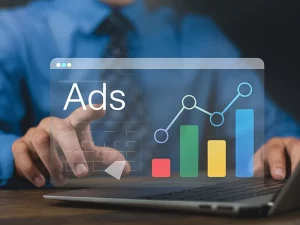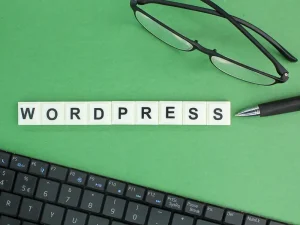Mastering Email Marketing: 5 Proven Strategies to Organize Your Subscriber List
Do your email marketing campaigns need to be fixed? Do you need help connecting with your subscribers and generating the desired results? If so, it’s time to examine how you’re organizing your subscriber list closely. In digital marketing, email remains one of the most effective ways to reach and engage your audience. But without proper organization and strategy, your emails may end up in spam folders or go unnoticed altogether. That’s why we’ve compiled this comprehensive guide on mastering email marketing strategies to organize your subscriber list. From segmentation and automation to cleaning and personalization, we’ll show you five proven strategies that will save you time, increase engagement, and deliver better results. So, let’s dive in!
Understanding the Importance of Organizing Your Subscriber List
In the fast-paced world of digital marketing, it’s easy to overlook the importance of organizing your subscriber list. However, this seemingly simple task can significantly impact the success of your email marketing campaigns. Think about it – if you send generic emails to a large and unsegmented list, many recipients will likely ignore or delete them without even opening them.
By organizing your subscriber list, you can ensure that your emails reach the right people at the right time with targeted content that resonates with their needs and interests. This level of personalization increases engagement and builds trust and loyalty among your subscribers.
Segmenting your list allows you to divide it into smaller groups based on specific criteria such as demographics, purchase history, or engagement levels. This segmentation enables you to create highly targeted campaigns that speak directly to each group’s unique preferences and needs.
Furthermore, utilizing automation tools can save you valuable time while increasing engagement rates. You can deliver timely and relevant content by setting up automated workflows triggered by specific actions or events (such as welcoming new subscribers or following up after a purchase) without manually sending individual emails.
But organizing your subscriber list isn’t just about targeting and automating; it’s also about regularly cleaning and updating it. Over time, some subscribers may become inactive or no longer interested in receiving your communications. By periodically removing these non-engaged users from your list, you’ll improve deliverability rates and ensure that only those genuinely interested in hearing from you receive your messages.
Lastly is personalization – making each subscriber feel special. When someone receives an email addressed specifically to them with content tailored to their interests or previous interactions with your brand, they’re more likely to pay attention and take action. Personalized emails have higher open rates, click-through rates, and conversion rates than generic ones because they show that you value each recipient.
Understanding why organizing your subscriber list is crucial for email marketing success. By segmenting your
Segmenting Your List for Targeted Campaigns
When it comes to email marketing, one size does not fit all. That’s why segmenting your subscriber list is crucial for running successful and targeted campaigns. By dividing your list into smaller, more specific groups based on demographics, behavior, or interests, you can tailor your messages to resonate with each segment.
Segmentation allows you to send personalized content that speaks directly to the needs and preferences of your subscribers. For example, if you have a clothing store and want to promote a sale on men’s shoes, sending that offer exclusively to male subscribers who have previously expressed an interest in footwear would yield better results than blasting it out to everyone on your list.
By targeting the right audience with relevant content, you increase the chances of engagement and conversion. Not only will segmentation help improve open rates and click-through rates, but it will also reduce unsubscribe rates as subscribers receive content that aligns with their interests.
Consider segmenting your list effectively using data points such as age, location, purchase history, and browsing behavior. You can also create segments based on subscriber actions like opening emails but not clicking through or those who haven’t engaged in a while – these segments present opportunities for re-engagement campaigns.
Utilize powerful automation tools provided by popular email service providers (ESPs) like Mailchimp or ConvertKit – they make segmenting effortless! Set up dynamic tags or rules within these platforms to automatically add new subscribers to relevant segments based on the information they provide during signup.
Remember: effective segmentation requires ongoing monitoring and analysis. Regularly assess how different segments perform regarding open rates, click-through rates, and conversions. This data will help refine future campaigns by identifying which segments respond best to certain types of content.
Don’t treat every subscriber as identical; divide them into meaningful groups reflecting their unique characteristics/preferences/behaviors, etc., then customize communications accordingly via automation tools. The result? More engaged subscribers, better campaign performance, and increased ROI
Utilizing Automation to Save Time and Increase Engagement
In today’s fast-paced digital world, time is of the essence. You have countless tasks as a marketer – from creating engaging content to analyzing campaign results. This is where automation comes in handy.
Automating certain aspects of your email marketing campaigns can save precious time better spent on other important activities. With automated emails, you can set up triggers based on specific actions or behaviors of your subscribers. For example, you send a welcome email when someone signs up for your newsletter or follows up with a personalized offer after a purchase.
Automation not only saves time but also increases engagement with your subscribers. You will capture their attention and drive them deeper into the sales funnel by delivering timely and relevant content based on their interests and actions.
One effective way to utilize automation is through drip campaigns. These are a series of pre-written emails that are automatically sent out at predetermined intervals. By strategically crafting these messages, you can nurture leads over time and guide them toward making a purchase decision.
Another powerful automation technique is using behavioral triggers. By tracking how subscribers interact with your emails – such as opens, clicks, or purchases – you can send targeted follow-up messages tailored to their interests or needs.
Furthermore, consider implementing an abandoned cart email sequence for an e-commerce business. When someone adds items to their shopping cart but doesn’t complete the purchase process, an automated reminder email can help recover those lost sales by gently reminding them about what they left behind.
Utilizing automation in your email marketing strategy allows you to streamline processes while maintaining high levels of engagement with your audience. It enables you to deliver personalized content at scale without sacrificing valuable resources like time and workforce.
Cleaning and Updating Your List for Better Results
Cleaning and updating your subscriber list is crucial in ensuring better results from your email marketing campaigns. Why? An updated or cluttered list can positively impact your open rates, click-through rates, and overall engagement with your audience.
Regularly cleaning your list means removing any inactive or unengaged subscribers. These are those who last interacted with your emails long ago or have consistently ignored them. By eliminating these individuals, you likely have a more targeted and interested audience to engage with and respond positively to your emails.
Updating your list involves keeping track of any changes in subscribers’ preferences or contact information. People change jobs, switch email addresses, or even update their interests over time. By staying on top of these changes and regularly updating your database, you can ensure you send relevant content to the right people at the right time.
One effective way to clean and update your list is by using automated tools to help identify inactive subscribers or flag incorrect email addresses. Additionally, consider implementing a re-engagement campaign where you reach out to dormant subscribers with special offers or incentives to encourage them back into active participation.
Remember that personalization also plays a key role here – use dynamic tags in subject lines and emails to address recipients by name and make them feel valued as individuals rather than just another name on the list.
Regularly reviewing metrics like open rates, click-through rates, and bounce rates will provide valuable insights into how successful these cleaning efforts were so that adjustments can be made if necessary.
In conclusion,
By cleaning and updating your subscriber list, you will improve the effectiveness of each campaign by targeting an engaged audience, ensuring accurate data,and providing personalized experiences. Don’t neglect this essential step in mastering email marketing strategies!
Personalization: Making Your Subscribers Feel Special
Personalization is the name of the game when it comes to email marketing. Gone are the days of generic emails that get lost in crowded inboxes. Today’s consumers expect a personalized experience that speaks directly to their needs and interests.
One effective way to make your subscribers feel special is by segmenting your list based on specific criteria such as demographics, purchase history, or engagement level with previous campaigns. This allows you to tailor your messaging and offers to each segment, increasing the likelihood of conversion.
Another powerful tool for personalization is automation. You can deliver targeted content at just the right time by setting up triggers and workflows based on subscriber behavior. For example, if a subscriber abandons their shopping cart, you can automatically send them a reminder email with a special discount code to incentivize them to complete their purchase.
Remember the power of dynamic content. With this feature, you can customize elements within an email based on individual preferences or past interactions. This could include inserting their first name into the subject line or showcasing products they have previously shown interest in.
It’s also essential to regularly clean and update your subscriber list. Remove inactive subscribers who have not engaged with your emails for an extended period and ensure that all contact information is accurate and up-to-date. This improves deliverability and ensures that you are targeting active and interested users.
Always track your results using analytics tools provided by your email service provider or third-party software. Pay attention to open rates, click-through rates, conversions, and other relevant metrics for each campaign to identify what works best for different segments of your audience.
In conclusion,
Personalizing your email marketing efforts goes beyond just adding someone’s first name into the subject line; it involves understanding their preferences and delivering tailored content that resonates with them individually.
By organizing your subscriber list effectively through segmentation, utilizing automation to save time and increase engagement, cleaning and updating your list
Measuring Success and Adjusting Strategies Accordingly
One of the key aspects of mastering email marketing is knowing how to measure your success and make adjustments accordingly. With proper tracking and analysis, it’s possible to tell if your strategies are working or need tweaking.
It would help if you established clear goals for your email campaigns. Are you aiming for increased open rates, click-through rates, or conversions? Once you have defined your objectives, use analytics tools to track these metrics and monitor their performance over time.
Another important aspect is A/B testing. By creating different versions of your emails with slight variations in subject lines, content layout, or call-to-action buttons, you can compare the results and identify which elements resonate best with your audience.
Furthermore, remember to monitor unsubscribe rates. Suppose a significant number of subscribers are opting out of receiving your emails. In that case, it may indicate that something needs adjustment – the sending frequency or the content being delivered.
Additionally, pay attention to engagement metrics such as click-through and conversion rates. These numbers will give insights into how well recipients engage with your content and take desired actions.
Lastly, but importantly, adjust strategies based on the data collected from these measurements. Use this information to fine-tune future campaigns by implementing changes that align more closely with what resonates most effectively with your subscribers.
Consistently measuring success and adjusting strategies accordingly based on real data rather than guesswork alone will help maximize the effectiveness of each email marketing campaign.
Conclusion
Mastering email marketing is crucial for the success of any digital marketing strategy. Organizing your subscriber list effectively ensures that your campaigns are targeted, engaging, and yield better results.
Segmenting your list allows you to tailor your messages to specific groups of subscribers based on their interests, demographics, or behaviors. This personalization increases engagement and conversion rates.
Automation is a game-changer in email marketing. It saves you time and ensures that your subscribers receive timely and relevant content. Utilize automation tools to set up welcome emails, drip campaigns, and follow-ups.
Regularly cleaning and updating your subscriber list helps maintain its quality. Remove inactive or unengaged subscribers to improve deliverability rates and overall performance.
Personalization goes beyond addressing subscribers by name; it’s about making them feel special. Use dynamic content and personalized recommendations based on their past interactions with your brand.
Measuring the success of your email marketing efforts is essential for continuous improvement. Track open rates, click-through rates (CTR), conversions, and other key metrics to gauge the effectiveness of different strategies.
In conclusion,
By implementing these proven strategies to organize your subscriber list effectively, you can maximize the potential of email marketing as a powerful tool for driving customer engagement and increasing sales opportunities in today’s digital landscape.
So go ahead – take control of your subscriber list now! Elevate Your Email Marketing Strategy with these effective techniques!







